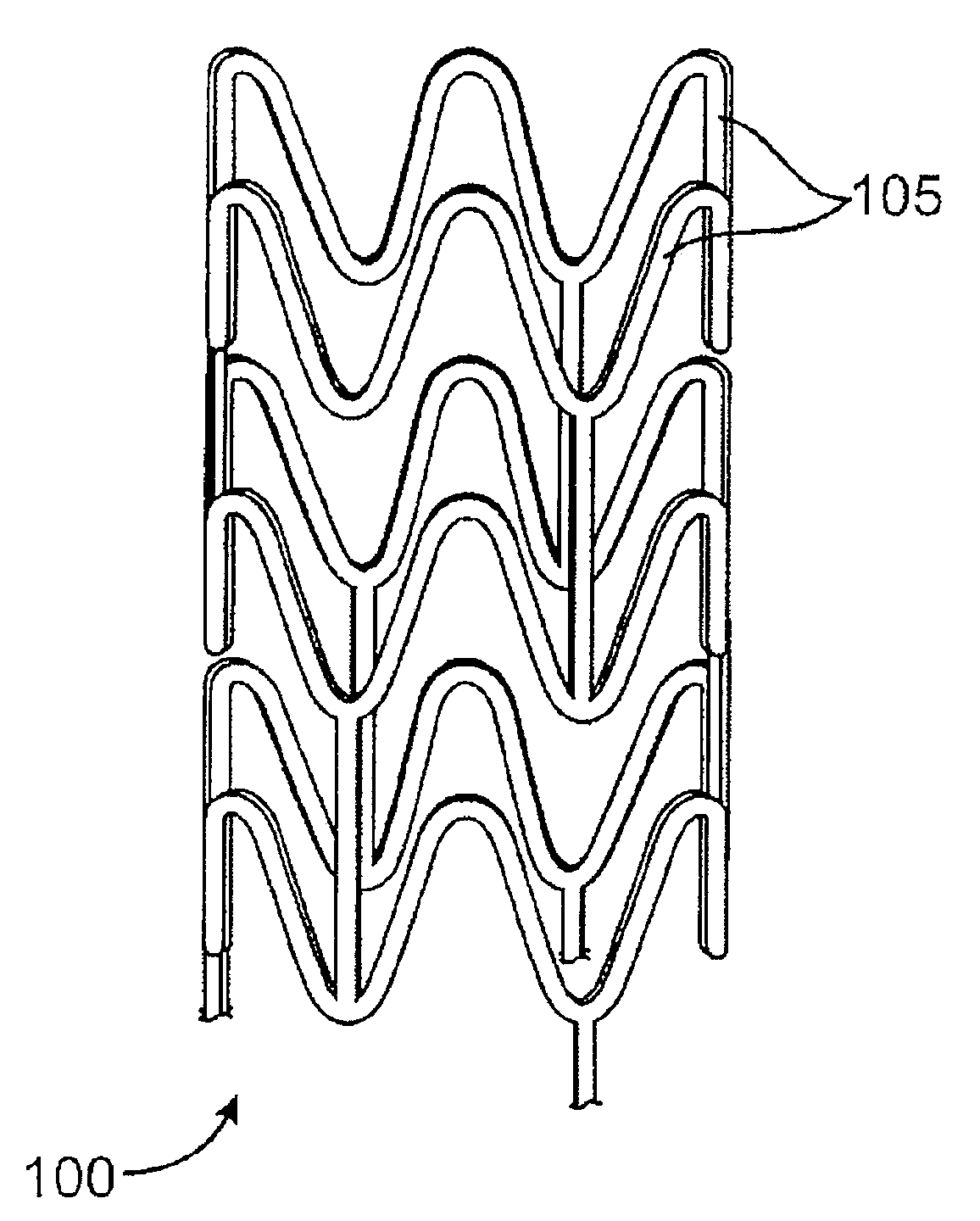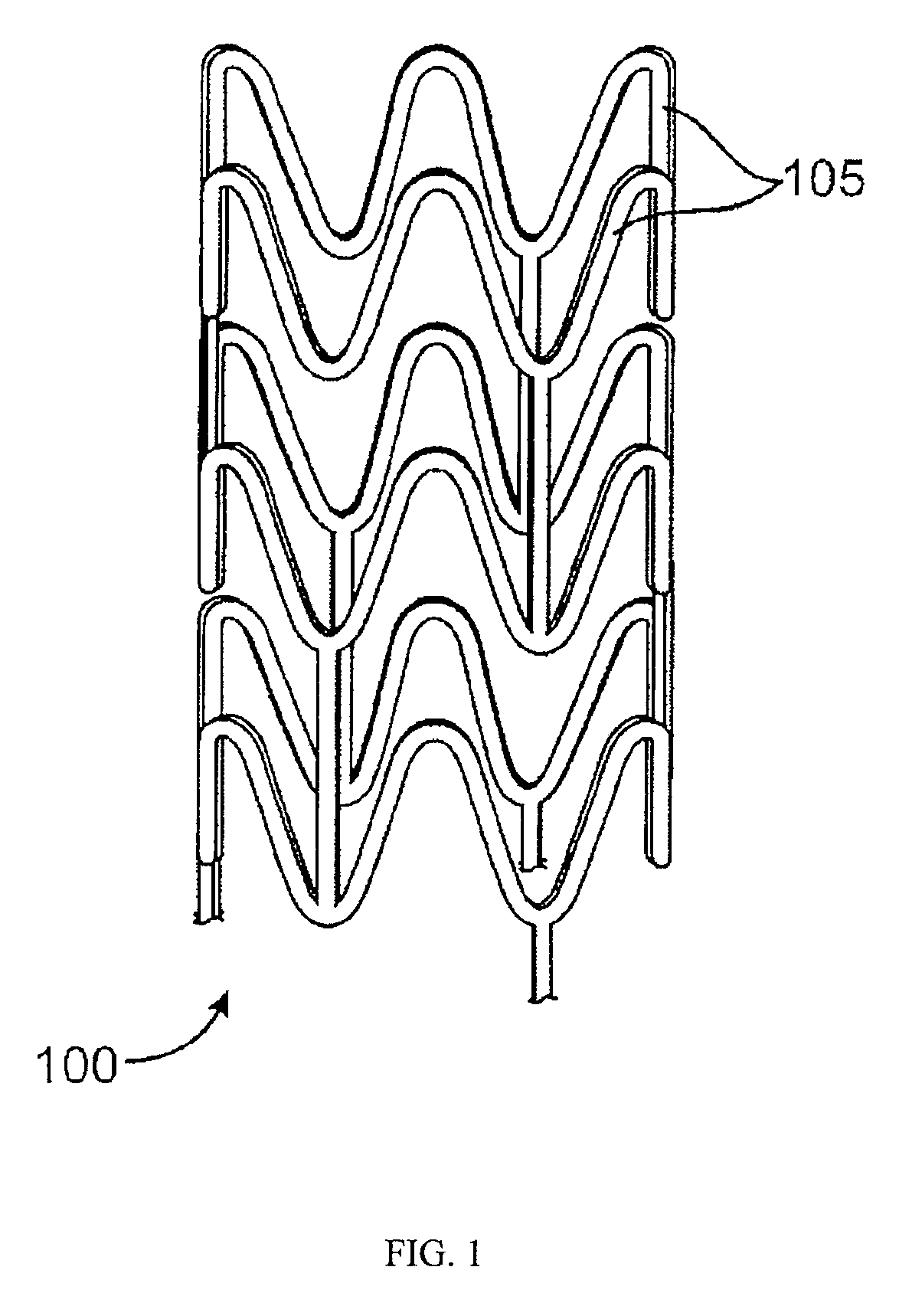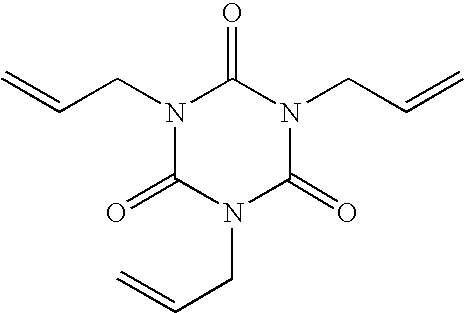Stent Formed from Crosslinked Bioabsorbable Polymer and Methods of Making the Stent
- Summary
- Abstract
- Description
- Claims
- Application Information
AI Technical Summary
Problems solved by technology
Method used
Image
Examples
example 1
[0099]Synthesis of poly(L-lactide-co-a-allyl-δ-valerolactone) (poly(LLA-co-AVL) was performed according to the reaction scheme described above. All reactions were performed with 0.04 mol % Sn(Oct)2 catalyst. Details of the synthesis and molecular weight data are provided in Table 1.
TABLE 1Poly(LLA-co-AVL) composition and molecular weight analysis.FeedIncorp.Reaction[mol %]AVLaTime [h]Yield [%]AVL:LLA[mol %]MnbMwbPDIb1a1738 0:100—67k109k1.631b1837 0:100—122k 221k1.8121568 5:951.474k125k1.703157510:902.661k135k2.204a204820:803.969k115k1.654b207320:803.7129k 194k1.515205530:705.682k124k1.43aDetermined by 1H-NMR,bDetermined by GPC in CHCl3 using Polystyrene standards, Molecular weight in g / mole, PDI = polydispersity index.
[0100]Samples of poly(LLA-co-AVL) were prepared with different mole percentages of AVL. The samples were analyzed with dynamic scanning calorimetry (DSC) to determine the Tg and the melting temperature (Tm). The results of the DSC analysis are shown in Table 2.
TABLE 2T...
example 2
[0101]Synthesis of poly(L-lactide-co-a α,α-diallyl-δ-valerolactone) (poly(LLA-co-DAVL) were performed according the to reaction scheme described above. All reactions were performed with 0.04 mol % Sn(Oct)2 catalyst. The reactions for samples 1 and 2 were performed without an initiator. Details of the synthesis and molecular weight data are provided in Table 3.
TABLE 3Poly(LLA-co-AVL) composition and molecular weight Analysis.FeedIncorp.Reaction[mol %]DAVLTime [h]Yield [%]DAVL:LLA[mol %]MnbMwbPDIb1185710:900.682k143k1.732183920:800.660k111k1.873174530:70—49k 81k1.64aDetermined by 1H-NMR,bDetermined by GPC in CHCl3 using polystyrene standards.
PUM
| Property | Measurement | Unit |
|---|---|---|
| Temperature | aaaaa | aaaaa |
| Fraction | aaaaa | aaaaa |
| Irradiation dose | aaaaa | aaaaa |
Abstract
Description
Claims
Application Information
 Login to View More
Login to View More - R&D
- Intellectual Property
- Life Sciences
- Materials
- Tech Scout
- Unparalleled Data Quality
- Higher Quality Content
- 60% Fewer Hallucinations
Browse by: Latest US Patents, China's latest patents, Technical Efficacy Thesaurus, Application Domain, Technology Topic, Popular Technical Reports.
© 2025 PatSnap. All rights reserved.Legal|Privacy policy|Modern Slavery Act Transparency Statement|Sitemap|About US| Contact US: help@patsnap.com



